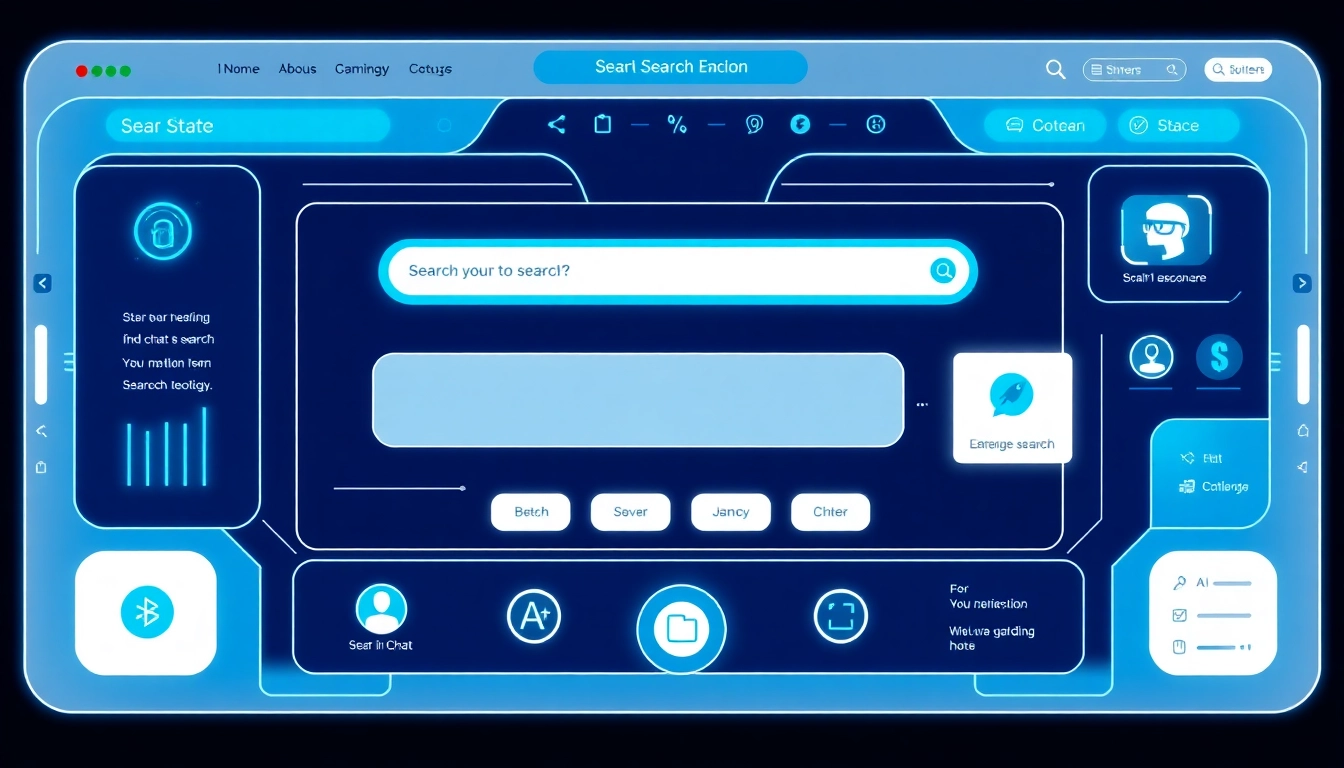Understanding Agentic AI
As technology rapidly advances, the field of artificial intelligence (AI) continues to evolve, leading to the emergence of innovative concepts such as Agentic AI. This form of AI is defined by its capacity to act autonomously, enabling systems to not only learn from their environment but also solve complex, multi-step problems without continuous human input. To grasp the full significance of Agentic AI, it is essential to explore its definition, key principles, differences from generative AI, and its practical applications in various fields.
Definition and Principles
Agentic AI refers to systems designed to autonomously make decisions, performing tasks and solving problems based on specific goals. Unlike traditional AI, which often requires human intervention for tasks such as data analysis or content creation, Agentic AI operates under sophisticated algorithms that allow it to reason and plan iteratively.
One of the primary principles of Agentic AI is its autonomy. These systems can analyze their surroundings, predict potential outcomes, and choose actions that align with their predetermined objectives. This allows for real-time decision-making and responsiveness in environments characterized by complexity and uncertainty, making them invaluable in sectors like healthcare, finance, and logistics.
How It Differs from Generative AI
Agentic AI is often discussed alongside generative AI, but the two serve vastly different purposes. Generative AI focuses on creating new content, such as text, images, or music, based on patterns and inputs provided by humans. Its capabilities are largely dependent on user prompts and guidance. In contrast, Agentic AI is action-oriented and centers around achieving specific outcomes through independent decision-making processes.
For instance, while a generative AI tool might create a marketing campaign based on set parameters, Agentic AI would autonomously adjust strategies in real-time based on analysis of campaign performance, market trends, and consumer feedback. This delineation underscores the unique potential and applications of Agentic AI in achieving comprehensive goals more effectively than its generative counterpart.
Real-World Applications
The practical applications of Agentic AI span multiple industries, radically transforming how businesses operate. Key areas of implementation include:
- Healthcare: AI systems assist in diagnostics, treatment planning, and patient management by autonomously analyzing patient data and medical literature.
- Finance: Automated trading systems use Agentic AI to analyze market conditions and execute trades based on real-time data.
- Logistics: Agentic AI optimizes supply chain management, adapting to unexpected disruptions and optimizing routes autonomously.
- Customer Service: Intelligent virtual assistants powered by Agentic AI provide personalized support, resolving inquiries without human intervention.
These examples underscore how Agentic AI enhances efficiency and productivity across various sectors by enabling systems to act with a level of independence and adaptability previously unattainable.
The Technology Behind Agentic AI
Core Algorithms and Processes
The development of Agentic AI relies heavily on advanced algorithms and machine learning processes. Core components include:
- Reinforcement Learning: This approach empowers AI to learn optimal actions through trial-and-error experiences, rewarding successful outcomes and discouraging ineffective ones.
- Predictive Analytics: By analyzing historical data, Agentic AI builds models that predict future events, allowing it to make informed decisions.
- Neural Networks: These systems mimic the human brain’s functioning, processing complex data inputs to derive actionable insights and strategies.
This amalgamation of technologies enables Agentic AI to function effectively in dynamic environments, making it adaptable and resilient.
Self-Learning Capabilities
One of the defining features of Agentic AI is its self-learning capability. As these systems engage with their environments and collect data, they undergo continuous improvement cycles, refining their algorithms based on experiences. This learning can be categorized into two primary modes:
- Supervised Learning: The AI is trained on labeled datasets, learning to make predictions or classifications based on previous examples.
- Unsupervised Learning: The AI analyzes unlabeled data without specific guidance, discovering patterns and insights independently.
This ability to learn without explicit programming allows Agentic AI to adapt to new challenges and environments, ultimately leading to smarter, more efficient systems.
Data Security Measures
As Agentic AI systems increasingly handle sensitive information, such as personal data in healthcare or financial records, data security measures become paramount. Key strategies include:
- Encryption: Utilizing advanced encryption methods to protect data at rest and in transit ensures that sensitive information remains secure from unauthorized access.
- Access Controls: Implementing strict access controls to determine who can interact with the AI system and what data they can access helps mitigate risks.
- Regular Audits: Conducting audits of AI processes and data usage aids in identifying potential vulnerabilities and ensuring compliance with regulations.
These measures not only protect sensitive information but also build trust among users, crucial for widespread adoption of Agentic AI technologies.
Benefits of Implementing Agentic AI
Increased Efficiency and Productivity
Organizations that implement Agentic AI experience considerable boosts in efficiency and productivity. By automating routine tasks and decision-making processes, companies free up human resources to focus on strategic initiatives and creative thinking. This shift leads to:
- Faster execution of tasks, reducing turnaround times.
- Enhanced capacity for data analysis, as AI can process vast amounts of information far more quickly than humans.
- Improved accuracy in task execution, minimizing human error.
These improvements translate into higher output and reduced costs, providing organizations with a competitive edge in their respective markets.
Reduction in Human Error
Human error is an inherent risk in any organization. By integrating Agentic AI systems, companies can significantly mitigate this risk. Key benefits include:
- Consistency in operations, as AI executes processes based on algorithms, minimizing variations that could arise from human oversight.
- Real-time monitoring and alerts for anomalies, enabling quicker responses to issues that might otherwise go unnoticed.
- Continuous learning adaptations, as AI refines its processes based on feedback, ensuring greater accuracy over time.
Through these mechanisms, Agentic AI not only improves accuracy but also enhances overall operational reliability.
Scalability of Operations
As businesses grow, scalability becomes essential. Agentic AI aids in this by providing flexible solutions that scale effectively with organizational growth. Benefits include:
- Dynamic resource allocation, allowing organizations to adjust AI resources according to demand quickly.
- Streamlined onboarding for new processes or teams, as AI systems can adapt to new inputs and contexts without extensive retraining.
- Integration with other technologies, ensuring that AI functions seamlessly alongside existing tools and platforms.
This scalability positions organizations to respond effectively to changing market conditions and increased operational demands.
Challenges to Discover with Agentic AI
Ethical Implications
The deployment of Agentic AI raises significant ethical concerns that must be addressed. Key issues include:
- Bias in Decision-Making: AI systems can inadvertently perpetuate existing biases present in training data. Ensuring fairness and equity in AI decisions is critical.
- Impact on Employment: As AI systems take over routine tasks, concerns about job displacement must be managed through workforce retraining and strategic deployment of AI.
- Accountability: Determining who is responsible for decisions made by AI can create legal and ethical dilemmas.
Effectively addressing these concerns is vital for fostering trust in Agentic AI systems and ensuring their responsible deployment.
Regulatory Frameworks
With the rise of Agentic AI, regulatory frameworks need to evolve to keep pace with technology advancements. Important considerations include:
- Data Privacy Regulations: Compliance with laws such as GDPR or CCPA ensures that personal information is treated with care.
- AI Governance: Development of guidelines that govern the ethical use of AI can safeguard against misuse and promote best practices.
- Continuous Monitoring: Regulatory bodies may need to implement systems for the ongoing assessment of AI technologies to keep pace with their evolution.
Creating robust regulatory frameworks will ensure that Agentic AI can be leveraged responsibly while mitigating potential risks.
Integration with Existing Systems
Implementing Agentic AI into existing systems poses several challenges, including:
- Compatibility Issues: Ensuring that new AI technologies integrate seamlessly with legacy systems can be technically complex.
- Change Management: Employees may resist adopting new technologies. Effective change management strategies must be in place to facilitate smooth transitions.
- Initial Costs: The upfront investment in AI technologies can be significant, necessitating careful budgeting and forecasting.
Organizations must strategically plan their integration processes to overcome these challenges effectively.
Future Trends in Agentic AI
Potential Developments and Innovations
The future of Agentic AI is promising, with several anticipated developments. Key areas to watch include:
- Enhanced Autonomy: Future systems may possess even greater levels of autonomy, reducing the need for human oversight in complex environments.
- Hybrid AI Models: Combining Agentic AI with generative AI could create systems capable of both decision-making and content creation, broadening their applications.
- Cross-Industry Collaborations: As industries seek to leverage AI, collaborations can lead to innovative solutions that propel Agentic AI applications forward.
These developments promise to expand the horizons of what Agentic AI can achieve, impacting various sectors positively.
Market Growth Predictions
Market analysts predict significant growth in the Agentic AI sector in the coming years. Factors driving this growth include:
- Increased investments in AI by tech companies and industries across the board.
- Greater acceptance of AI technologies by businesses, as they recognize the value of improved efficiency and cost savings.
- The proliferation of data, which feeds AI systems and enhances their learning and decision-making capabilities.
Such growth not only solidifies the importance of Agentic AI in contemporary technology but also sets the stage for unprecedented advancements.
Influence on Workforce Dynamics
The rise of Agentic AI will inevitably impact workforce dynamics. Key considerations include:
- Job Evolution: While some jobs may be displaced, new roles focused on AI management, oversight, and coordination will emerge.
- Upskilling and Reskilling: Organizations will need to invest in training programs to equip employees with relevant skills to work alongside AI systems.
- Cultural Shifts: Embracing AI in the workplace may lead to shifts in organizational culture where collaboration with AI becomes a norm.
These changes underscore the necessity for proactive workforce planning to navigate the exciting terrain shaped by Agentic AI.



